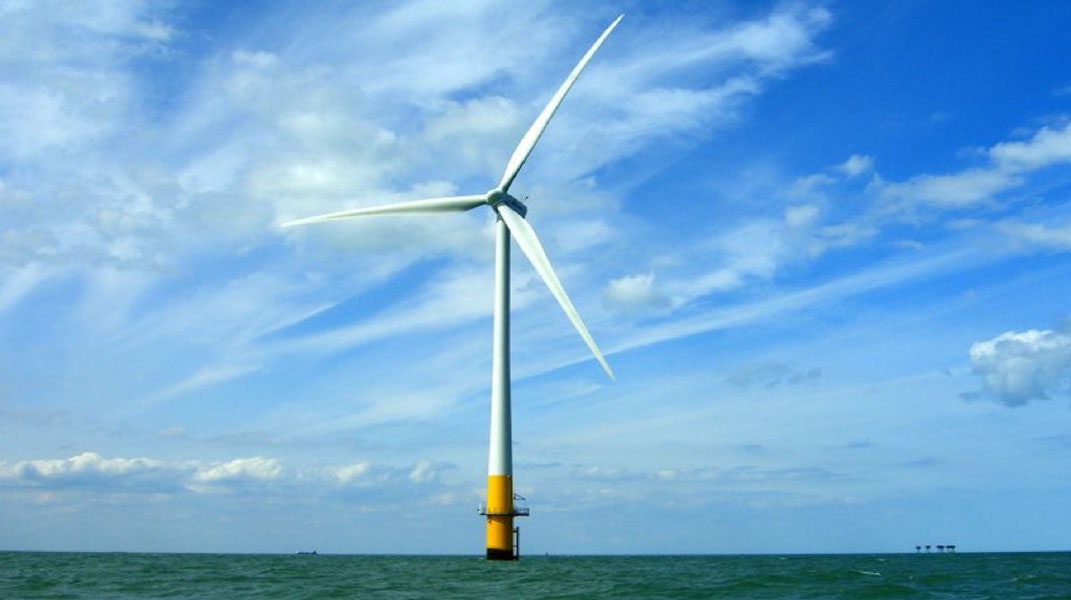The most common sizes of wind turbines

When many people think of wind turbines, they may imagine small machines behind someone’s house. However, industrial wind turbines are massive pieces of technology with blades that can easily span hundreds of feet, according to National Wind Watch.
Energy created by wind turbines is an economy of scale, so larger turbines can create cheaper electricity. Wind turbine components are often transported by roadway. Once turbines are constructed, they are anchored in steel and rebar platforms that easily eclipse 1,000 tons in weight and rest 6 to 30 feet in the ground. Turbines then have to be fitted with lights so they can be visible. Overall, they take up about 50 acres of space per megawatt on average.
Energy created by wind turbines is an economy of scale, so larger turbines can create cheaper electricity. In addition, larger turbines are usually more efficient and are better to use offshore. However, smaller turbines are easier to build and often result in less energy fluctuation.

No matter the size, wind turbines are an impressive addition to the landscape. Generally, a wind turbine with a 600-kW generator will have a rotor diameter of around 144 feet. If you double the diameter, you will get four times as much power. Manufacturers often change their machines to account for local wind conditions. Many existing models tower more than 400 feet in height, combining extra long towers with longer and longer blades.
The most common turbines in the US are manufactured by Vestas, Gamesa, and General Electric, while some older facilities use turbines from NEG Micon and Zond. One of the most common turbines, the GE 1.5-megawatt model, has 116-foot blades on a 212-foot tower, while the Vestas V90 has 148-foot blades on a 262-foot tower. The GE 1.5-megawatt model weighs in at more than 164 tons; the tower alone weighs about 71 tons. The total weight of the Vestas V90 is about 267 tons.
Keep reading for a list of some of the most common wind turbines currently in production, or scheduled to begin soon, along with their sizes.
MHI Vestas V164-9.5 MW
The largest turbine in production today is the majestic MHI Vestas V164. The blades alone measure about 262 feet in length and the overall structure weighs about 73,000 pounds. The turbine has seen action in the Irish Sea, and has also been chosen for projects set to begin in mid-2018.
Adwen AD8-180
The Adwen has a blade that is 10% longer than those on the MHI Vestas V164, and the turbine has been chosen for a number of offshore projects in France. The rotor diameter of the turbine spans about 600 feet.
Siemens-Gamesa Renewable Energy SWT- 8.0-154
With a rotor diameter of almost 400 feet, this turbine has been widely used off the coast of England and in Germany. The power rating of the turbine is about eight megawatts.
Enercon E-126 7.5 MW
This turbine has a rotor diameter of about 416 feet. It is one of the largest onshore turbines in production. Overall, the turbine’s tip height is about 650 feet, and the steel yaw-bearing connector alone is about 48 feet in diameter. The turbine’s segmented blades make it easier to move them around on land and leads to a quicker and easier installation.
MingYang SCD 6.0 MW
Development toward serial production of this Chinese turbine has been a bit slow, but the design is very compact and features just two blades. The prototype is about 460 feet in diameter, and the company is also working on larger variants. With an output of about six megawatts, the design features blades specifically designed in Germany. The other main parts are built in China.

Senvion 6.2M152
The prototype turbine has a rotor diameter of about 500 feet, while the current model spans about 414 feet. The company says the longer blade length will increase yield and will improve the operating life of the turbine by about five years. Overall, at least 200 units of the turbine have been installed or are currently in operation, and the company has discussed plans to unveil a turbine that would have a generating capacity of 10+ megawatts.
GE Haliade 6MW
This turbine was on full display last year at America’s first offshore wind farm, at the Block Island Development. With a rotor diameter of about 495 feet, the turbine has been chosen to power projects located off the coast of France and in the North Sea near Germany.
Sinovel SL6000
The six-megawatt unit features a rotor diameter of about 420 feet, but an extended version of the turbine spans about 508 feet. Currently, the turbine is in action off the east coast of China in a demonstration project, but the turbine’s future is uncertain due to slashes in the company’s research and development budget.
Many scientists project that in the coming decades, the size of wind turbines could dwarf those of today. A study with four energy research organizations found that by 2030, the median height for onshore turbines in the US will be about 108 meters more than the current average. By the same year, offshore wind turbines that average 11 megawatts of generating capacity are projected to replace today’s machines, which average about 4.1 megawatts.
Ryan Wiser of Lawrence Berkeley National Laboratory said late last year that these numbers could be midpoint estimates, because the study asked experts for a typical turbine size, not the maximum that would be built. Researchers at Sandia National Laboratories last year were also working on technology that would reduce the stress on rotor blades, which could result in a 50-megawatt turbine with blades that are longer than 650 feet.


